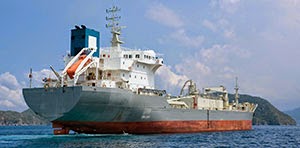Sustainable Development in Industrial Ventilation

The best route to sustainable development in industrial ventilation, dust extraction and waste extraction is through the design of the system. Moving air requires energy. Heating air requires energy. In both cases the potential to save energy over a prolonged period through good design exceeds that from other current efficiency developments. Key points of design include:
- The air volume
- Fan efficiency and motor control
- Heat recovery and air make-up
- Training and maintenance
Air volume:

The broad spectrum of industrial ventilation and process extraction requirements means that a simple solution to sustainable development is not possible as, for the most part, each system is a bespoke design for the specific application. However, optimizing the air volume in each design is without doubt one of the best. Why?
- Air volume is directly proportional to power
- 10% less air means 10% less energy
How is this achieved? Often through the design of the hood, the position relative to the emission source and how much that source is enclosed.

The hood designs in the diagram above represent concepts as there will often be limitations on how far this design philosophy can be followed. However, it is clear to see that the position of the hood relative to the emission source and changing to an enclosure hood design, where practicable, could reduce the required extraction air volume significantly.
Fan efficiency:
.jpg)
The range of fans used across the application of ventilation and process extraction systems being typically considered could have efficiency from 50% to 80%. The fan efficiency compares the input energy to the work done and has a significant impact on energy consumption, for example,
- 40,000 hours operation broadly equates to 5-years @ 24/7 or 10-years @ 16 hours 5 days per week.
Based on 25kW aerodynamic energy requirement and an energy cost of 10p/kWh
- A 50% efficiency fan would consume 50kW/h, at a cost of £200,000.00
- A 75% efficiency fan would consume 33.3kW/h, at a cost of £133,200.00
If this is compared to the stated difference in efficiency between IE3, IE2 and IE1 motors of around 1.5-2%, at these motor ratings, then notwithstanding the possibly increased capital cost of selecting a higher efficiency fan, the energy savings through the 40,000 hour life cycle are vastly more significant than the initial costs. For more information on these motor standards, look up "Premium efficiency" on Wikipedia.
Motor control:
.jpg)
A related aspect to consider is the motor control where further energy saving possibilities exists although often not through the widely promoted speed or frequency inverter control.
In the first instance it is necessary to appreciate the laws of physics which apply to fans once installed in a system, assuming there are no changes to the ducting design.
- A 10% increase in the fan speed increases the volumetric airflow by 10%; however it requires a 33% increase in electrical power.
- Conversely, a 10% reduction in the fan speed reduces the airflow by 10% and reduces the electrical power by 27%. Just 5% speed reduction reduces the power by 14% so the savings through speed optimization can be significant.
However, a fan only absorbs the power required to do the work so, reducing the speed by 10% through a change in the drive belts may provide the saving at a modest investment. And as the power and motor size increase the savings become disproportionately greater.
| % fan speed | 80% | 90% | 100% | 110% |
|---|---|---|---|---|
| % motor load kW | 51% | 73% | 100% | 133% |
Table of motor power change with fan speed change
Example
- 37kW motor installed
- 32kW absorbed by the fan
- Energy cost per annum, 24/7 operation, is £27,955 @ 10p/kWh.
- Energy cost per annum, 16/5 operation, is £13,312
- 10% speed reduction means absorbed power becomes 24kW
- Assuming new drive belts and labour costs £500 (renewed annually anyway)
- Then first year net saving at 24/7 operation is circa £7,000, then £7,500
- And first year saving at 16/5 operation is circa £3,000, then £3,500.
Of course this is only applicable to a fan with a drive belt system fitted. An inverter controller will do the same, although the installation would cost more and an older motor may not be suitable for frequency variation control.
It should be noted there are certain advantages in using an inverter over the simple drive belt option including:
- Applicable to all fans; direct drive or belt drive
- Further speed change adjustments are easily made
- Little loss in motor efficiency at reduced speeds, whereas reduced power at unchanged motor speeds may reduce the motor efficiency
- Fan speed reduction is limited to reducing the rated motor power by 50%, when other factors may come into play
- Applications with frequent start/stop cycles
In designing an extraction system, it is prudent and not untypical to err on the side of caution and allow for a modest increase in airflow and hence fan speed on completion of the installation, which would have an impact on the power required, and to select a motor one size above the bare minimum required. However, once installed and commissioned at the correct speed, the load on the motor may be some way below the motor duty, although only drawing the proportionate electrical current. Often a case is made for inverters based on the installed power rather than absorbed power of the fan motor. It is fairly simple for an electrical engineer to measure the running current of the motor compared to the motor rated full load current (FLC) to provide an indication of the energy being used.
Air input:
.jpg)
Exhausted air must be replenished either uncontrolled through egress into the building or controlled through an air make-up supply. Whenever the external temperature is below the required internal level, heat energy will also be required. Whether or not the air entering is controlled or not is often dependant on the building size and relative amount of extracted air. As an example, 70kW of heat energy would be required for a 20OC temperature rise in 10,000m3/h and with a 5p/kWh heat energy, could cost around £10,000 per annum on a 24/7 operation.
More sustainable approaches to air make-up include controlled introduction which reduces draughts and may, in some instances, lessen the heat load required. Re-using exhausted and filtered air will have an operational cost however often shows a payback within two to three years. Although less efficient than returning filtered air, heat exchangers may also enable the re-use of exhausted heat energy when filtering in impracticable. Sources of "free" heat should also be considered, compressors and hot process areas being valuable sources on occasion.
Once into operation the levels of training and maintenance can have an impact on wasted energy, environmental emissions or waste materials requiring landfill disposal.
The main objective under these headings is achieving optimum performance. By definition energy, emissions and waste are then controlled. It is a difficult position to reach and maintain. As ventilation and process extraction, (dust or waste), provide secondary or support roles to the principle production process all too often they get a lesser level of training and maintenance. Performance may decline gradually over time and often goes unnoticed with some examples including:
- Incorrect low compressed air pressure or cleaning control settings resulting in lower filter cleaning efficiency. This increases pressure drop and hence the absorbed motor power, and may reduce extraction efficiency.
- Incorrect high compressed air pressure resulting in "puffing"- dust passing through the filter bags due to over-cleaning which increases the carry-over emissions and reduces the life of the filter bags through fatigue during the cleaning process.
- Incorrect fan belt drive adjustment leading to a loss of fan speed which could lead to lost production through a build-up in the ducting or lower efficiency in the extraction and a reduction in the control measure. Complying with COSHH/LEV guidelines may help to identify this, however with 14 month intervals there is a risk of long term deficiency.
- Operators using equipment in an unintended manner is all too frequent and often goes unrecognised. When this situation occurs, performance as a control measure, emissions to atmosphere and an increase in energy consumption may easily result.
In conclusion, sustainable developments in industrial ventilation and process extraction applications are not only achievable but may be quite significant because they are based on good system understanding, design and use. Interestingly many recent developments in energy efficiency are over shadowed by the improvements which may be possible through design, equipment selection and an on-going user training and maintenance programme. It is clear that any low cost installation advantage may be far from the lowest overall cost and soon offset as running and service costs are included over a modest period of time. Also, when using and maintaining the system as intended, the safety and protection provided will be optimised.

.jpg)
.jpg)






